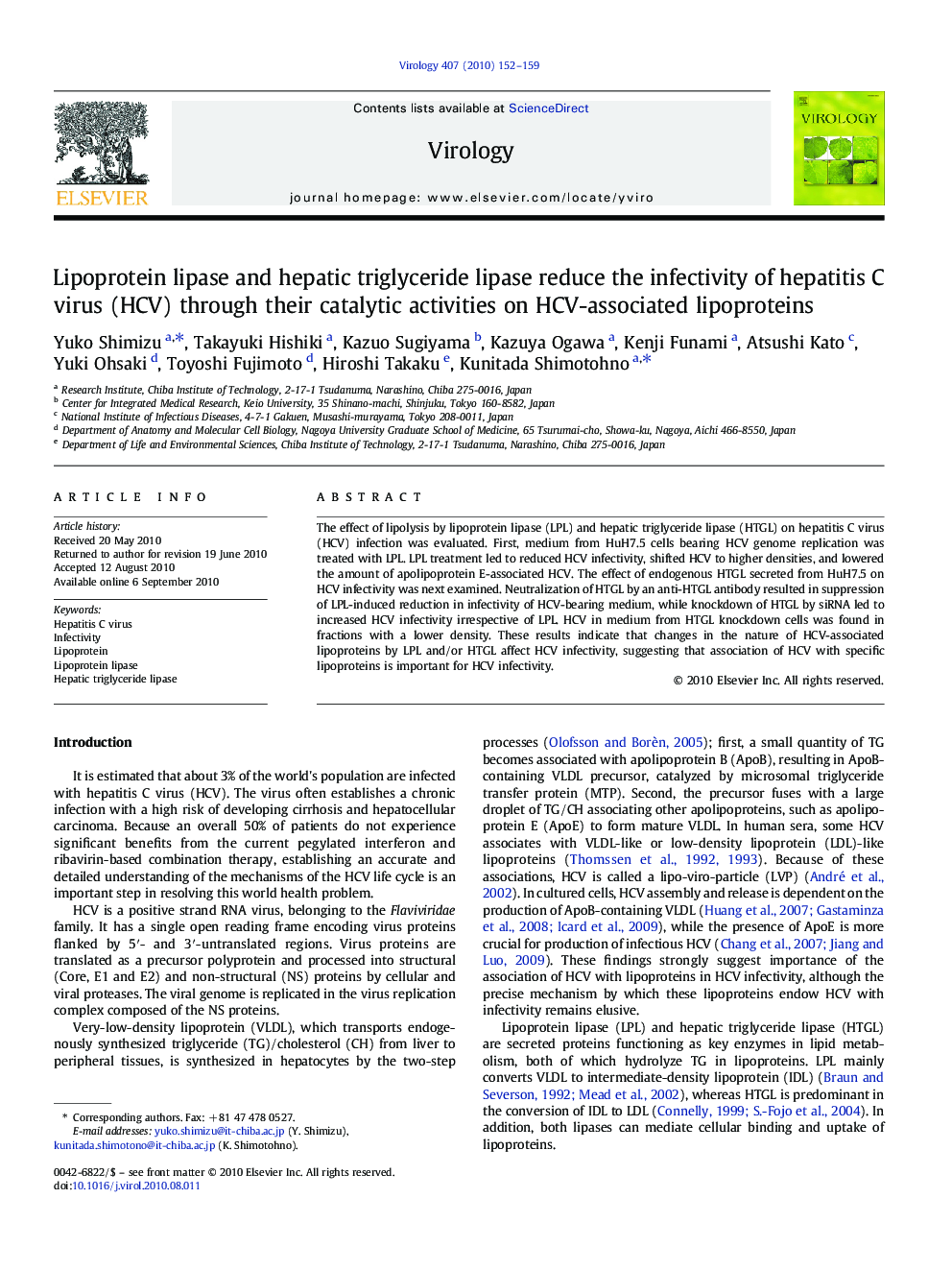| Article ID | Journal | Published Year | Pages | File Type |
|---|---|---|---|---|
| 3424873 | Virology | 2010 | 8 Pages |
The effect of lipolysis by lipoprotein lipase (LPL) and hepatic triglyceride lipase (HTGL) on hepatitis C virus (HCV) infection was evaluated. First, medium from HuH7.5 cells bearing HCV genome replication was treated with LPL. LPL treatment led to reduced HCV infectivity, shifted HCV to higher densities, and lowered the amount of apolipoprotein E-associated HCV. The effect of endogenous HTGL secreted from HuH7.5 on HCV infectivity was next examined. Neutralization of HTGL by an anti-HTGL antibody resulted in suppression of LPL-induced reduction in infectivity of HCV-bearing medium, while knockdown of HTGL by siRNA led to increased HCV infectivity irrespective of LPL. HCV in medium from HTGL knockdown cells was found in fractions with a lower density. These results indicate that changes in the nature of HCV-associated lipoproteins by LPL and/or HTGL affect HCV infectivity, suggesting that association of HCV with specific lipoproteins is important for HCV infectivity.
